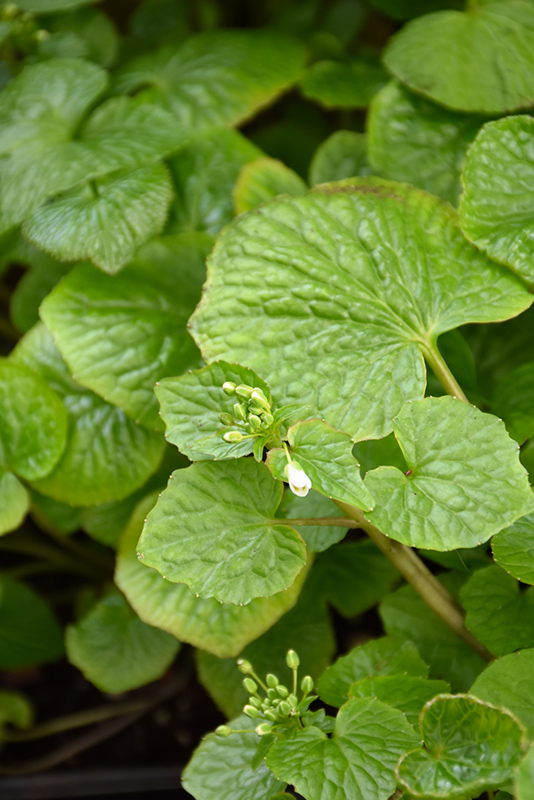Height: 24 inches
Spacing: 12 inches
Sunlight:
![]()
![]()
Hardiness Zone: 8
Description:
Self seeding, and shade loving, this selection produces green foliage with white flowers and 8 inch long rhizomes; taking up to 2 years to mature, the entire plant is edible but mainly harvested for rhizomes; hot and spicy, great for many dishes
Edible Qualities
Wasabi is a perennial vegetable plant that is commonly grown for its edible qualities. The entire above-ground parts of the plant are edible, and are usually harvested from mid to early winter. The edible parts have a hot taste and a spicy fragrance.
The plant is most often used in the following ways:
- Fresh Eating
- Eating When Cooked/Prepared
- Cooking
- Preserves
Planting & Growing
Wasabi will grow to be about 24 inches tall at maturity, with a spread of 24 inches. When planted in rows, individual plants should be spaced approximately 12 inches apart. Its foliage tends to remain dense right to the ground, not requiring facer plants in front. It grows at a medium rate, and under ideal conditions can be expected to live for approximately 5 years. As an herbaceous perennial, this plant will usually die back to the crown each winter, and will regrow from the base each spring. Be careful not to disturb the crown in late winter when it may not be readily seen!
This plant is typically grown in a designated vegetable garden. It does best in partial shade to full shade. Keep it well away from hot, dry locations that receive direct afternoon sun or which get reflected sunlight, such as against the south side of a white wall. It does best in average to evenly moist conditions, but will not tolerate standing water. It may require supplemental watering during periods of drought or extended heat. It is not particular as to soil type or pH. It is quite intolerant of urban pollution, therefore inner city or urban streetside plantings are best avoided, and will benefit from being planted in a relatively sheltered location. This species is not originally from North America.
Wasabi is a good choice for the vegetable garden, but it is also well-suited for use in outdoor pots and containers. It can be used either as 'filler' or as a 'thriller' in the 'spiller-thriller-filler' container combination, depending on the height and form of the other plants used in the container planting. It is even sizeable enough that it can be grown alone in a suitable container. Note that when growing plants in outdoor containers and baskets, they may require more frequent waterings than they would in the yard or garden. Be aware that in our climate, this plant may be too tender to survive the winter if left outdoors in a container. Contact our experts for more information on how to protect it over the winter months.

